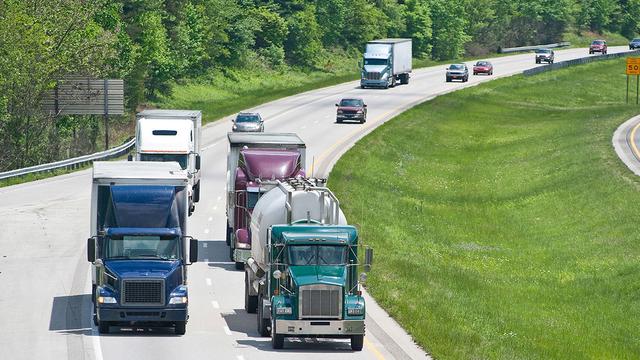gasoline tax, according to a new Humphrey School report. (Photo: Creative Commons)
Vehicles, how we power them, and driver behavior are all changing. According to University of Minnesota researchers, these motorization trends will affect how we fund our roads.
“Understanding motorization trends is critical for policymakers to make informed decisions about how we will invest in transportation infrastructure and provide transportation services to meet public needs,” says Professor Jerry Zhao of the Humphrey School of Public Affairs.
Zhao is the lead author of a report that analyzes Minnesota’s motorization trends from 1980 to 2016. “The trends we found mean that less revenue is collected from federal and state gasoline taxes.”
The number of registered vehicles in Minnesota almost doubled between 1980 and 2016, from 3 million to 5.4 million vehicles, and Minnesotans traveled more than twice as far, accounting for 60 billion miles in 2016. However, when taking population growth into account, both measures have turned downward in recent years.
Since 2000, the number of vehicles per driver and per person in Minnesota has declined. In addition, the number of miles traveled per person and per vehicle dropped significantly in the 2000s.
“Vehicle-miles traveled ticked back up in 2016, but it’s unlikely that the growth rate of vehicle ownership will return to pre-2000 levels,” Zhao says. “There is evidence the rapid increase in motorization that occurred over several decades until the 2000s has ended.”
Fuel use in the state follows a similar pattern. Fuel consumption in Minnesota has increased since 1980, but most of this growth came before 2000. Fuel consumption per driver and per vehicle has declined 10 and 11 percent, respectively, since 2000 due to increased fuel efficiency and decreased vehicle-miles traveled, says Zhao (pictured at left).
Looking ahead, increased fuel efficiency and the adoption of hybrid and electric vehicles are trends that are likely to continue. While there are currently about one million electric vehicles on U.S. roads, that number is projected to grow to more than 18 million by 2030, Zhao says.
Vehicle- and ride-sharing, better public transportation options, and the prospect of automated vehicles could also speed up younger generations’ transition away from vehicle ownership.
Different funding options are needed
All told, Zhao suggests policymakers look for more options to fund roads. In Minnesota, this process has already begun, with the motor vehicle sales tax and the motor vehicle registration tax making up an increasing share of revenues in recent years. The federal fuel tax was last raised in 1993, and Minnesota has increased the state’s gas tax once since then, in 2009.
Other states are also exploring options to offset decreased fuel tax revenue, Zhao says. These include raising the gas tax, tying the gas tax rate to the price of gasoline, tying the gas tax to inflation, taxing miles traveled instead of gallons of gas consumed, and finding different sources of revenue.
“This research provides us with an understanding of some very important trends surrounding vehicle ownership and travel in the state, and the impact on collection of highway revenue,” says Ken Buckeye, program manager with MnDOT’s Office of Financial Management.
“Vehicle ownership and vehicle-miles of travel on a per capita basis are trending downward in the last two decades,” Buckeye says. “That, coupled with increasing fuel efficiency and vehicle electrification trends, point to the importance of considering other revenue tools such as vehicle-miles-of-travel fees if we are going to maintain Minnesota’s high-quality transportation infrastructure.”
This story was originally published by the Center for Transportation Studies.


